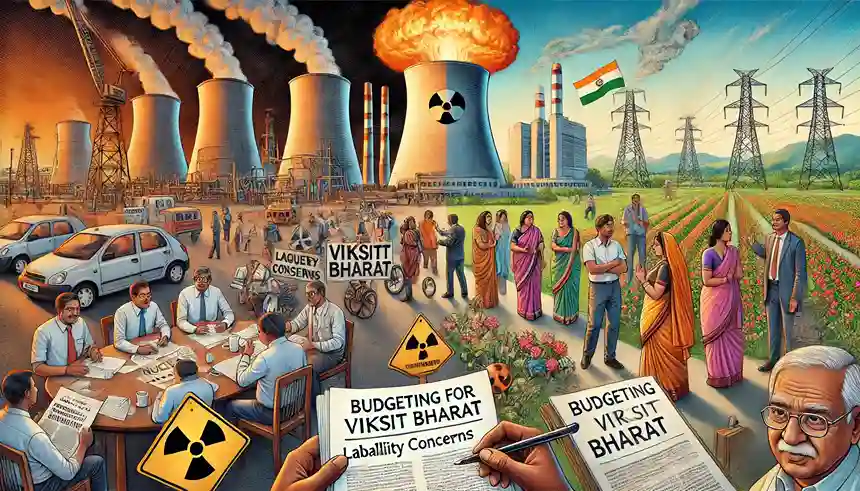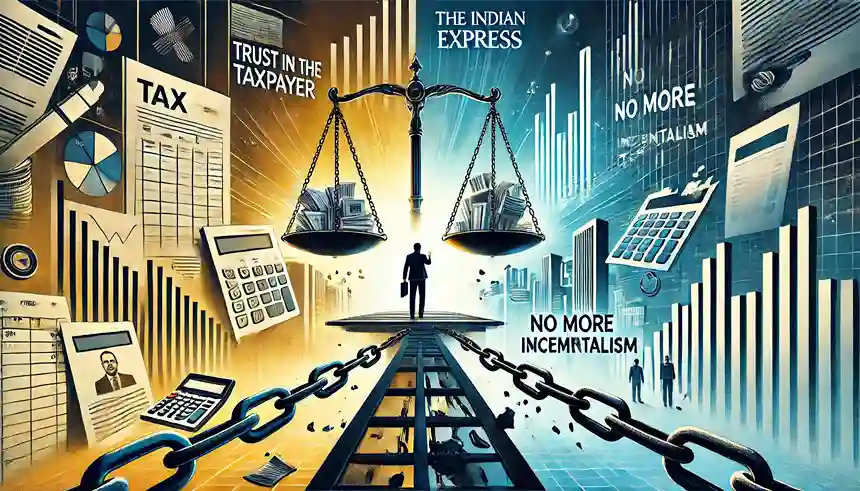Analysis of The Hindu Editorial 1: Sunset for the U.K.’s coal-fired power, lessons for India
Context:
As the United Kingdom shutters its last coal-fired power plant in Nottinghamshire, it signals a significant milestone in the global shift toward cleaner energy. However, this transition has been anything but seamless. While some argue for replicating the U.K.’s coal phase-out globally, developing countries like India need a more tailored approach, ensuring that past mistakes are not repeated.
Introduction:
The closure of Britain’s final coal-fired plant has been heralded as a victory for environmental progress, but this journey spans over seven decades. The process was marked by complex social, economic, and geopolitical challenges. The U.K.’s phase-out did not simply begin with its 2015 Paris Agreement commitment; rather, it can be traced back to major historical events such as the Great Smog of 1952 and the discovery of natural gas in the 1960s. These events, coupled with economic shifts and political decisions like Margaret Thatcher’s mine closures in the 1980s, gradually made coal production less viable.
For developing nations like India, which are still heavily dependent on coal, a direct imitation of the U.K.’s timeline is unrealistic. India’s energy and economic landscape is vastly different, requiring a more flexible and long-term strategy.
A Timeline of Britain’s Coal Decline
| Year/Event | Significance |
|---|---|
| 1952: The Great Smog of London | Prompted the Clean Air Act of 1956, a critical step toward reducing coal use. |
| 1965: North Sea Gas Discovery | Accelerated the shift away from coal to natural gas. |
| 1980s: Thatcher’s Mine Closures | Led to significant economic hardship in coal-reliant communities. |
| 2015: Paris Agreement Pledge | Marked the U.K.’s formal commitment to ending unabated coal-fired power by 2025. |
| 2024: Closure of Nottinghamshire Plant | The end of the coal era in the U.K., but with lingering regional inequalities. |
- Analysis of The Indian Express Editorial – February 13, 2025

- Analysis of The Hindu Editorial – February 13, 2025

- Analysis of The Indian Express Editorial – February 12, 2025

- Analysis of The Hindu Editorial – February 12, 2025

- Analysis of The Hindu Editorial – January 1, 2025

Comparing India’s Trajectory to the U.K.
India, with a pledge to achieve net-zero emissions by 2070, faces an entirely different challenge. While the U.K.’s coal transition unfolded over 70 years, India has a much shorter timeframe and higher stakes. India’s population is over 20 times that of the U.K., and its energy demands continue to grow rapidly. Coal still powers 70% of India’s energy output, with over 350 operational coal mines and more than 100 new ones planned.
Moreover, India’s carbon emissions are significant. In 2023, India was the third-largest emitter globally, releasing 2.9 gigatons of carbon dioxide, compared to the U.K.’s 384 million metric tonnes. However, on a per capita basis, India’s emissions are much lower—2 tonnes per person compared to the U.K.’s 5.5 tonnes.
Cumulative Carbon Emissions: A Historical Perspective
When considering historical emissions, the disparity becomes even more apparent. Between 1850 and 2024, the U.K. ranks fourth globally in cumulative carbon emissions, due in large part to its industrial history and role as a colonial power. This historical responsibility adds complexity to the global narrative of coal phase-outs and emphasizes that countries like India cannot be expected to follow the same rapid transition path as the U.K.
India’s Coal Dependency: A Snapshot
| Key Factor | Details |
|---|---|
| First Coal Mine | Raniganj Coalfield, established in 1774 by the British East India Company. |
| Coal Power Dominance | 70% of India’s energy still comes from coal, with an installed capacity of 218 GW. |
| Expected Peak Production | India is expected to peak in coal consumption between 2030-2035. |
| Employment in Coal Sector | Estimated 340,000 miners, with another 400,000 in thermal power plants, suggesting a coal workforce of over 1 million. |
The Challenges and Opportunities Ahead for India
As India faces rising energy demands, it must grapple with its dependency on coal while simultaneously expanding its renewable energy capacity. India’s coal sector supports millions of jobs, many of them in regions that are among the poorest in the country. Unlike the U.K., where natural gas and renewable sources were gradually introduced to replace coal, India faces the dual challenge of increasing energy output while transitioning to cleaner sources.
Lessons from the U.K.’s Holistic Approach to Transition
Britain’s coal phase-out was accompanied by a holistic strategy focused on retraining workers and redeveloping former coal-dependent regions. Early retirement programs, skills retraining, and community redevelopment initiatives helped to cushion the blow of the coal industry’s decline. In particular, former coal mining areas like Yorkshire have seen investment in offshore wind farms and the repurposing of old coal infrastructure for biomass energy.
For India, a similar holistic approach is essential. The country must begin to plan regional redevelopment programs and retraining efforts for coal workers far in advance of its 2070 net-zero deadline. This will ensure that communities dependent on coal do not face the same economic hardships seen in Britain’s coal regions during the 1980s.
Conclusion:
While India has set a sufficient timeline to achieve net-zero emissions, the need to start planning for a coal phase-out is urgent. India’s renewable energy capacity is growing impressively, but coal consumption has also risen in recent years. To avoid repeating the mistakes of Britain’s past, India must commit to a transparent, forward-looking strategy that focuses on regional development, workforce retraining, and decommissioning of coal plants.
- [PDF] International Law by Jan Klabbers –3rd Edition

- [PDF] Shankar IAS Environment 10th Edition Free Download
![[PDF] Shankar IAS Environment 10th Edition Free Download](https://savepdf.in/wp-content/uploads/2025/04/PDF-Shankar-IAS-Environment-10th-Edition-Free-Download-1040x650.png)
- [PDF] “Arihant Computer Awareness Book 1” – Free Download
![[PDF] Arihant Computer Book.pdf” – Free Download for Competitive Exams](https://savepdf.in/wp-content/uploads/2025/04/PDF-Arihant-Computer-Book.pdf-–-Free-Download-for-Competitive-Exams-1040x650.webp)
- [PDF] – Basic Horticulture – Free PDF Download
![[PDF] Basic Horticulture Free PDF Download](https://savepdf.in/wp-content/uploads/2025/02/PDF-Basic-Horticulture-Free-PDF-Download-1040x650.jpg)
- [PDF] The Pragmatic Programmer by David Thomas and Andrew Hunt

Analysis of The Hindu Editorial 2: From solidarity to pseud, India’s shift on Palestine
Context:
In the current global environment, where great power politics dominate, India’s longstanding ideals of non-alignment and anti-colonialism are increasingly seen as outdated. These principles, once cornerstones of Indian foreign policy, are now perceived as obstacles to achieving modern geopolitical objectives.
Introduction:
India’s position on the Palestine issue, once a symbol of its anti-colonial legacy, has significantly evolved since the end of the Cold War, particularly over the past decade. The country’s growing alignment with Israel, marginalization of Palestine, and adoption of a more transactional diplomacy are all reflective of broader shifts in both domestic and global contexts. What was once a values-driven policy now leans heavily towards strategic interests.
Evolution of India’s Foreign Policy
The Rise of Hindutva in Diplomacy
India’s shifting stance on Palestine is closely linked to the rise of Hindutva, which has gradually influenced the country’s foreign policy. The Bharatiya Janata Party (BJP) and its ideological affiliates, such as the Sangh Parivar, have steered Indian diplomacy toward a Hindu nationalist worldview. This has led to a closer relationship with Israel, a nation viewed through the Hindutva lens as a natural ally in a shared battle against perceived Islamic threats. This shift in ideology marks a significant departure from India’s earlier support for Palestine, which was rooted in anti-colonialism, self-determination, and anti-racism.
Historical Solidarity with Palestine
India’s support for Palestine in the post-colonial era was once a proud symbol of its commitment to global justice and solidarity with oppressed peoples. It was a stance that resonated deeply with India’s own anti-colonial struggle. However, this support has now been reframed in a more communal context, with the Palestinian cause often seen as linked solely to the Muslim identity in India.
Repression of Pro-Palestinian Voices
In modern India, pro-Palestinian protests are increasingly met with hostility. Public figures like Asaduddin Owaisi, who openly support Palestine, face vilification, and students who express solidarity are often targeted. Protests are frequently suppressed, with participants arrested or charged under stringent laws like the Unlawful Activities (Prevention) Act. The state’s tacit approval of this repression aligns with its growing ideological and diplomatic ties to Israel.
Symbolic Gestures: Modi and Israel
In 2017, Prime Minister Narendra Modi’s unscheduled visit to Mount Herzl, the resting place of Zionism’s founder Theodore Herzl, was a clear indication of India’s deepening ideological alignment with Israel. This marked a significant departure from India’s historical commitments, as foreign policy under Modi has increasingly been framed by strategic calculations rather than traditional values.
From Values to Interests: A Shift in Diplomatic Priorities
Transition to Transactional Diplomacy
A key factor driving India’s shift is its movement from a values-based to a transactional diplomacy. During the Nehruvian era, foreign policy was deeply influenced by principles of anti-colonialism, including strong support for Palestinian statehood. However, as the Cold War came to an end, this ideological foundation began to erode, replaced by a focus on immediate, narrowly defined interests.
Strengthening Ties with Israel
India’s ties with Israel have grown exponentially in recent years. Bilateral trade between the two countries surpassed $10 billion in 2022-23, covering key sectors such as defence, agriculture, and technology. Israel’s expertise in these areas has made it an indispensable partner for India’s development goals. This flourishing relationship is defined by a diplomatic strategy of ‘dehyphenation’—where India’s relationships with Israel and Palestine are treated separately—and ‘depoliticisation,’ which allows India to deepen its ties with Israel without addressing politically sensitive issues.
| Policy Approach | Explanation |
|---|---|
| Dehyphenation | Treating relations with Israel and Palestine independently, allowing greater flexibility. |
| Depoliticisation | Expanding cooperation with Israel by avoiding politically charged topics. |
A Wider Global Trend
India’s pivot towards transactional diplomacy is part of a broader global trend, where foreign policies are increasingly driven by economic and strategic interests. Since the 1990s, India’s West Asia policy has evolved, with a stronger focus on energy security, investments, and its diaspora. In this new geopolitical order, the old paradigm of non-alignment has been replaced by a pragmatic approach that prioritizes tangible outcomes over ideological commitments.
The Marginalisation of Palestine in India’s Foreign Policy
Economic and Strategic Interests Take Center Stage
As India seeks to attract investment from the Gulf and strengthen its partnerships in West Asia, the Palestinian issue has faded into the background. Unlike in the past, when supporting Palestine was viewed as a moral imperative, the current government views the issue through a more pragmatic lens. Given the lack of immediate economic or strategic benefits, India’s support for Palestine has been largely symbolic, with realpolitik driving foreign policy decisions.
Ambitions and the Great Power Game
India’s ambition to become a global power has also influenced its changing stance on Palestine. While India positions itself as a potential mediator in international conflicts, such as the war in Ukraine, its alignment with Israel and the U.S. is evident. The U.S., Israel’s strongest ally, plays a pivotal role in the China-U.S. rivalry, and India’s strategic interests are increasingly aligned with this dynamic.
Rebranding Non-Alignment: A Strategic Shift
In the context of great power politics, the principles of non-alignment and anti-colonialism, once core to India’s foreign policy, are now viewed as outdated. Over time, these ideals have been rebranded—from non-alignment to strategic autonomy and, more recently, multialignment. Each rebranding has involved a dilution of the normative values that once underpinned India’s diplomatic efforts, as seen in its muted response to Israel’s actions in Gaza.
India’s Response to Gaza
Despite the extensive loss of life and destruction in Gaza, India’s official response has been restrained, limited to vague calls for peace and dialogue. The focus remains on strengthening its ties with Israel, particularly in defence and technology. This shift away from value-based diplomacy is part of a larger trend where India prioritizes its strategic ambitions over its historical commitments to anti-colonialism and global justice.
Conclusion:
While official rhetoric may still endorse a two-state solution, India’s foreign policy has clearly shifted towards strengthening its relationship with Israel, prioritizing economic and strategic interests. In this new era of international politics, India appears to have moved away from its role as a champion of anti-colonial struggles. Instead, the country has embraced a more pragmatic approach that places power politics and national interests above historical values. As the global order continues to shift, one key question remains: Will India continue to prioritize strategic gains over the foundational principles of its foreign policy?
This transformation signals a broader trend in the international landscape, where values are increasingly sidelined in favor of transactional diplomacy and great power politics.

